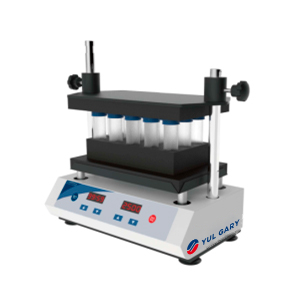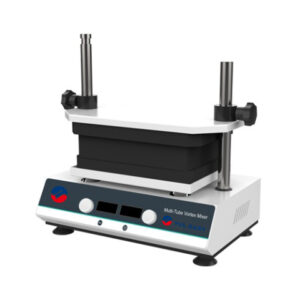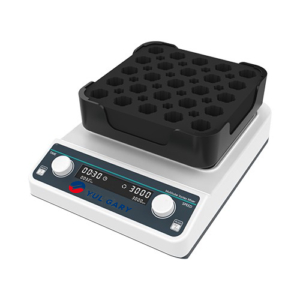Description
The Multi-Tube Vortex Mixer YG1807 is a cutting-edge laboratory mixer designed to deliver high-efficiency mixing for up to 50 samples at a time, with adjustable speeds ranging from 500 to 2,500 rpm. Equipped with a brushless DC motor and LED digital display, this mixer ensures precise, quiet operation, making it an ideal choice for biochemistry, clinical labs, and research facilities aiming to enhance their productivity and accuracy in sample preparation.
Market Price
Laboratory vortex mixers, such as the YG1807, typically range between USD 1,100 to USD 1,900 in the market, depending on specific features and capabilities. This price range reflects the robust construction and advanced technology integrated into the mixer, offering a reliable investment for research and diagnostic laboratories seeking a balance between cost and performance.
Frequently Asked Questions
- What tube sizes are compatible with this vortex mixer? The YG1807 supports tube diameters ranging from 10 to 29 mm, with optional adapters and sponge holders available for various sizes.
- How does the brushless motor benefit my lab work? The brushless DC motor offers a longer lifespan, quieter operation (below 60 dB), and more consistent mixing speeds, ensuring reliable performance over extended use.
- Can I mix different tube sizes simultaneously? Yes, the modular sponge holders allow for mixing different diameter tubes in the same run without any hassle.
Advantages and Disadvantages
Advantages
- High throughput – Capable of processing 50 samples at once for increased efficiency in the laboratory.
- Precision control – Offers ±10 rpm speed accuracy, monitored via a digital display.
- Versatile applications – Suitable for radioimmunoassay, cell culture, and chemical mixing tasks.
Disadvantages
- Large footprint – Occupies 420 mm of bench space, requiring adequate lab planning.
- No cooling function – Not recommended for temperature-sensitive samples due to lack of cooling capabilities.
- Adapter changes needed – Switching between different tube sizes requires specific holder replacements.
Product Use in the Field
The YG1807 excels in various laboratory settings: it enhances high-volume sample preparation in clinical labs, aids in cell culture media mixing in biotechnology research, supports reagent homogenization in pharmaceutical QA, facilitates student practical sessions in university labs, and assists with water sample processing in environmental testing.
Recommendations
- Balance load evenly across the platform to optimize performance and stability during operation.
- Use pulse mode for delicate samples that require intermittent mixing for preservation.
- Clean sponge holders regularly to prevent any potential cross-contamination between samples.
- Secure loose tubes to minimize the risk of splashing or sample loss during mixing.
Features
- Large capacity processing for 7 different tube sizes (10-29mm diameter).
- Advanced brushless DC motor ensuring maintenance-free operation.
- Flexible operation modes with continuous, timed (1min-99hrs), or pulse mixing.
- Universal voltage support (100-230V) for global lab compatibility.
- Heavy-duty construction supporting up to 5kg load capacity.
Technical Specifications
| Model | YG1807 |
| Speed Range | 500 – 2,500 rpm |
| Orbit | 4 mm |
| Speed Accuracy | 10 rpm |
| Max Load | 5 Kg |
| Timing Range | 1min – 99hrs 59min |
| Voltage | AC 100 – 230V, 100 W |
| Dimension | 240 x 420 x 430 mm |
| N. W / Kg | 14 |






